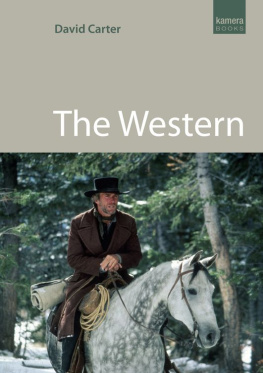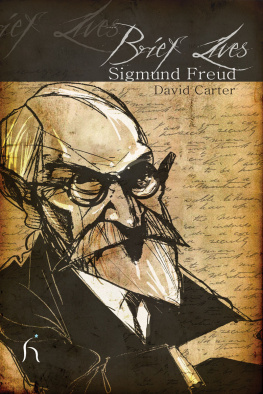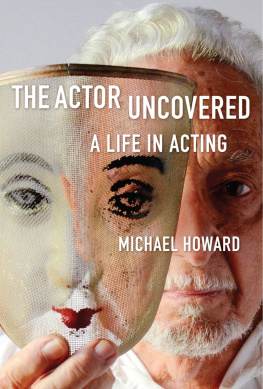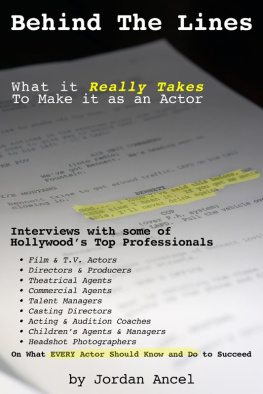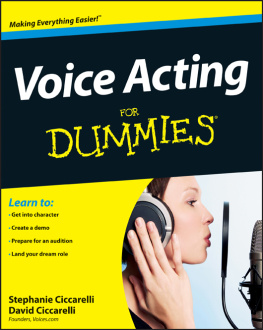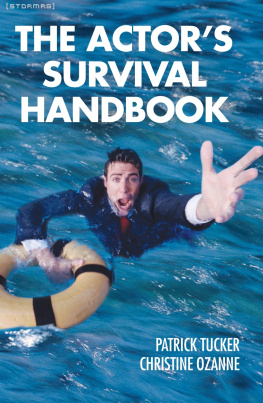The principal debt of gratitude owed by the author is to the numerous actors and actresses, those living and those who have long since made their final exits, and whose utterances have been scoured and analysed. I have diligently read between their lines for clues to the mystery of their art. Another major debt, as always, is owed to my ever-scrupulous editors.
You cannot learn how to become an actor by reading a book. Many actors would also argue that you cannot, in any case, teach someone how to act. Yet countless books on the topic exist and hundreds of institutions offer training courses for would-be actors. This should be no surprise, for the situation is the same in the practice of all the arts, to a greater or lesser degree. One cannot become an actor without certain psychological preconditions, though these do not predetermine one to become an actor. The basic propensity has to be nurtured, and it is in this secondary process that reading and training can play a role.
It is also often said that the difference between amateur and professional actors is one of technique, though what this technique consists of is usually left vague. It will be perceived in the course of the present book that the techniques in question are, amongst other things, the nurture and use of the voice, the control of breathing, and the precise physical control of the body. Also, every professional actor has to learn how to maintain stamina through long performances and through long runs. All of these accomplishments are not, of course, out of the reach of the amateur, if they have the time to devote to acquiring them.
For amateur and would-be professional alike, the present book aims to provide a basic introduction to the kinds of attitudes, mental processes and other abilities which are necessary if one wishes to develop and mature as an actor.
The author is modest concerning his own experience and abilities: countless years as both actor and director in an amateur drama group and a lifelong enthusiasm for all-things-theatrical have lent him the courage to express his convictions. Many people, especially directors, have spoken disparagingly of the average thespians inability to be articulate about what they do, but the author is convinced that, if anyone can reveal the secrets of the actors art, it is surely those who practise it successfully and well. This book is therefore based on the opinions and feelings of many well-known actors and actresses about all the major aspects of their work. The conclusions and advice provided are therefore very much based on their reflections.
The two main sections of this book are noticeably different in character, but there is a logical connection and development between them. The first section traces the history of acting styles and techniques through the ages, with an emphasis on descriptions of what performances in past ages were like and what principles governed them. It will be demonstrated that all acting styles fall somewhere on a continuum between naturalism and artificiality, with preferences for one tendency over the other varying from age to age and culture to culture. The usefulness of this section to the modern actor is in providing some awareness of the traditions behind present vogues in acting styles. Many recognised great actors, such as Laurence Olivier, have acknowledged how they developed their own styles of acting from familiarity with the acting styles of the past. Each new generation of actors takes what it admires from great acting of yesteryear and reacts against those elements which now seem hackneyed or inappropriate. Acting, as with many processes in history, is a dialectic between extremes, with the styles of older generations always both inspiring new generations and provoking them to change. A history of this dialectic process also serves to remind every aspiring actor that in the theatre, too, there is nothing new under the sun.
Furthermore, an awareness of what styles of acting prevailed in particular periods and for certain kinds of plays is crucial when preparing to act a role in a period piece: a play written in highly stylised language will not lend itself easily to naturalistic playing.
The focus then shifts in the second section to the tasks facing every actor and the skills it is necessary to master. The general goals and ideals, realism and truth, are considered first, and the methods of preparing a role, including considerations of methods developed by the most influential theorist of acting technique, Konstantin Stanislavsky. Some consideration is then given to the technical control of the voice and the need to respect the structure of the language. Important issues relating to the process of rehearsing a play are explored, as is the actors relationship to the audience. Certain special concerns are then considered, such as acting for films and television, differences between national styles, and handling the language of Shakespeares plays.
In the third section, advice is provided for those readers who are seriously considering becoming professional actors, and the importance of good training is stressed.
The Resources section contains information on books dealing with the main aspects of acting covered in the present book, together with advice on publications which are especially useful for would-be professionals.
Those wishing to seek further advice about setting up a drama group and organising productions are recommended to read a companion volume in the Creative Essentials series by the same author and entitled Plays And How toProduce Them.
Finally, if this book has served to help a few people discover the actor in their soul, it will have served its purpose well.
Surveying what has been written over the ages by actors, dramatists, critics and philosophers, it is clear, from the descriptions, that all acting styles fall somewhere along a continuum between what may loosely be called the Natural and the Artificial. Various other aspects of acting have been given close consideration over the years, according to the concerns of the day, such as gesture, movement, elocution, etc, but most assessments of actors performances usually attempt to rate them as being somewhere between convincingly realistic or natural and highly stylised and artificial. The terms realistic and natural do not always denote praise; nor do the terms stylised and artificial always denote criticism. It tends to depend on the writers own preferences and the tastes of the era.
In the following survey the concern has constantly been to focus on the styles of acting encouraged and the techniques employed to attain them. Accounts of actual dramatists and their works, and the modes of theatrical production, are therefore only included where of relevance to understanding the acting styles. For similar reasons, the traditions in some countries are only dealt with cursorily or not at all, relevance to the development of acting theory and styles being always the only criterion. Also, as the purpose of this book is to provide advice to would-be actors in the English-speaking world, and in what may be loosely described as the western theatrical tradition, all consideration of acting traditions in the Far and Near East, and in Africa, India and South America have been excluded, with the occasional exception of allusions by specific exponents of the theory and practice of acting.
THE CLASSICAL PERIOD
Greece
Although dramatic performances of some kind doubtless occurred in earlier ages, and most likely among the Egyptians, most accounts of the history of drama and of acting start with reference to the tragic drama of the Greeks developed from the recitation of dithyrambs and ritual choral dances in celebration of the god Dionysus, the god of wine and fertility. The very first actor whose name has come down to posterity is Thespis, who is reported to have stepped aside from the choral narration with its leader and impersonated one of the characters in the story being told. Whatever the facts of the matter, his name has been transmuted into an epithet for all those who indulge in dramatic performance: Thespians.


